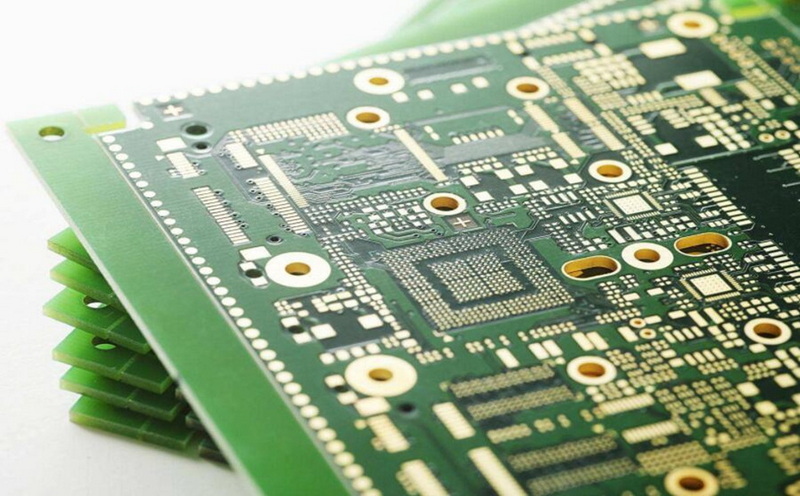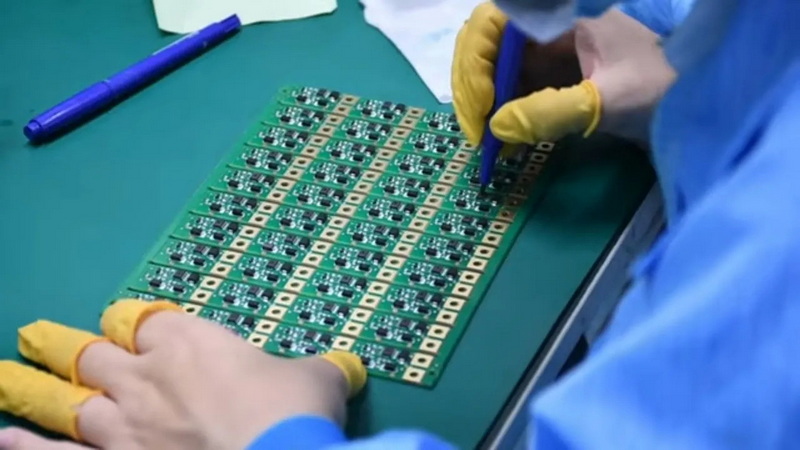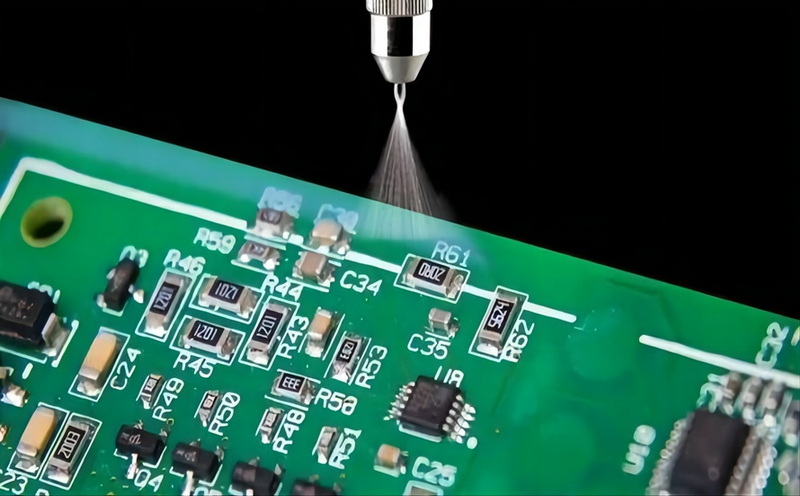Content Menu
● Introduction
● Planning and Preparation
>> Importance of Layout Design
● Equipment Installation and Configuration
>> The Role of Automation
● Testing and Calibration
>> Continuous Improvement Practices
● Timeframe for Setup
● Conclusion
● FAQ
>> 1. What is the typical timeframe for setting up a Fuji SMT production line?
>> 2. What are the key steps in setting up a Fuji SMT production line?
>> 3. What equipment is essential for a Fuji SMT production line?
>> 4. How can manufacturers ensure the efficiency of their SMT production line?
>> 5. What factors influence the cost of setting up a Fuji SMT production line?
● Citations:
Introduction
Fuji SMT production lines are pivotal in modern electronics manufacturing, allowing for the efficient and precise assembly of electronic components. The setup of a new Fuji SMT production line is a multi-faceted process that requires meticulous planning and execution to ensure optimal performance and productivity. This article will explore the various stages involved in setting up a Fuji SMT production line, the timeframes associated with each stage, and the factors that can influence these timelines.

Planning and Preparation
Setting up a Fuji SMT production line begins with thorough planning and preparation. This stage is critical as it lays the groundwork for a successful setup. Key steps include:
- Assessing Production Requirements: Manufacturers must evaluate their production needs, including the volume of production, types of components, and complexity of assemblies. This assessment will guide decisions regarding equipment selection and layout design.
- Selecting Equipment: Choosing the right equipment is vital for the efficiency of the SMT line. Essential machinery typically includes:
- Pick-and-Place Machines: These are responsible for placing components onto printed circuit boards (PCBs) with high precision.
- Solder Paste Printers: These machines apply solder paste to PCBs before component placement.
- Reflow Ovens: Used to solder components onto PCBs by heating them uniformly.
- Inspection Systems: Automated optical inspection (AOI) systems help detect defects in assembled boards.
- Designing Layout: An efficient layout minimizes bottlenecks and ensures a smooth workflow. Considerations include the flow of materials and components through the line, as well as adequate spacing between machines for maintenance access.
Importance of Layout Design
The layout of an SMT line significantly impacts its efficiency. A well-designed layout minimizes material handling and reduces cycle times. Key considerations include:
- Linear Flow: Arrange machines in a linear sequence to facilitate smooth movement of PCBs through the production process.
- Minimized Distance: Reduce the distance between machines to decrease transport time and potential errors.
- Adequate Space: Ensure there is enough space for maintenance and troubleshooting without disrupting production.
Proper ergonomics and safety measures should also be integrated into the layout design to enhance operator comfort and reduce injury risks.
Equipment Installation and Configuration
Once planning is complete, the next step involves installing and configuring the equipment. This phase includes:
- Installation of Machinery: Equipment should be installed according to the designed layout. Following manufacturer instructions is crucial to ensure proper setup.
- Software Configuration: Modern SMT equipment often comes with sophisticated software that controls various aspects of production. Configuring software settings to match production requirements involves setting up component libraries, defining placement coordinates, and programming reflow oven profiles.
- Integration of Systems: Proper integration between pick-and-place machines, solder paste printers, and inspection systems is essential for seamless operation. This may involve establishing network connections and configuring data exchange protocols.
The Role of Automation
Automation plays a significant role in enhancing productivity within an SMT line. Integrating automated systems such as automated material handling can reduce manual handling errors, improve speed, and enhance flexibility within production lines. Automation not only boosts production speed but also contributes to error reduction.

Testing and Calibration
After installation, rigorous testing and calibration are necessary to ensure that the SMT line operates correctly. This stage includes:
- Running Test Boards: Test boards should be run through the line to verify that all equipment functions as expected.
- Inspection of Results: Inspecting results allows for adjustments to be made to achieve optimal performance. Regular maintenance and calibration are also essential for long-term reliability.
Continuous Improvement Practices
Implementing continuous improvement practices such as lean manufacturing can help identify areas for optimization in your SMT line setup. Regularly reviewing performance metrics like throughput, defect rates, and cycle times can lead to significant efficiency gains over time.
Timeframe for Setup
The total time required to set up a Fuji SMT production line can vary significantly based on several factors:
- Complexity of Production Requirements: More complex assemblies or higher production volumes may require additional time for setup.
- Type of Equipment Used: The sophistication of the machinery can influence installation time; advanced machines may take longer to configure.
- Expertise of Installation Team: A skilled installation team can expedite the setup process significantly compared to less experienced personnel.
On average, setting up a Fuji SMT production line can take anywhere from a few days to several weeks. A typical timeframe might look like this:
- Planning Phase: 1-2 weeks
- Installation Phase: 1 week
- Testing Phase: 1 week
- Total Timeframe: Approximately 3-4 weeks
Conclusion
Setting up a new Fuji SMT production line is a complex but rewarding endeavor that establishes the foundation for efficient and high-quality electronics manufacturing. By following a structured approach encompassing planning, installation, testing, and calibration, manufacturers can ensure their SMT production lines operate successfully. Understanding the factors influencing setup time can help companies better prepare for this critical process.

FAQ
1. What is the typical timeframe for setting up a Fuji SMT production line?
The setup process can take anywhere from a few days to several weeks, depending on the complexity of requirements and equipment used.
2. What are the key steps in setting up a Fuji SMT production line?
The key steps include planning and preparation, equipment installation and configuration, as well as testing and calibration.
3. What equipment is essential for a Fuji SMT production line?
Essential equipment includes pick-and-place machines, solder paste printers, reflow ovens, and inspection systems.
4. How can manufacturers ensure the efficiency of their SMT production line?
Efficiency can be ensured by designing an optimal layout, integrating systems properly, and conducting regular maintenance and calibration.
5. What factors influence the cost of setting up a Fuji SMT production line?
Cost factors include equipment prices, installation expenses, training costs, and ongoing operational expenses.
Citations:
[1] https://www.smtfactory.com/Essential-Steps-for-SMT-Production-Line-Setup-id49117676.html
[2] https://yic-assm.com/add-on-services/fuji-smt-assembly-line/
[3] https://www.smtfactory.com/Strategic-SMT-Production-Line-Layout-Design-id40117676.html
[4] https://alimco.in/WriteReadData/UserFiles/file/Specification3MR3.pdf
[5] https://www.adoptsmt.com/en/efficiency-enhancement-in-smt-manufacturing/
[6] https://42qrpt1.42-q.com/mes_wiki/index.php/MES_Fuji_Configuration
[7] https://smtnet.com/index.cfm?fuseaction=search_submit&searchstring=fuji+flexa+manual&collection=site_forum&start_at=53
[8] https://www.swfuliusmt.com/2024/07/12/understanding-smt-lines-the-backbone-of-modern-electronics-manufacturing/
[9] https://www.smtfactory.com/Optimizing-Efficiency-Strategies-for-A-Smooth-SMT-Line-Production-Process-id47463586.html
[10] https://www.smtfactory.com/Expert-Guidance-for-SMT-Production-Line-Setup-id42117676.html
[11] https://www.fujiamerica.com/information-introduction-of-smart-setup-stations.html
[12] https://www.gssmt-parts.com/how-to-optimize-your-smt-line-setup-for-high-speed-production.html
[13] https://www.youtube.com/watch?v=9uet6TNtUXI
[14] https://www.fuji.co.jp/en/about/rs/process
[15] https://goldlandsmt.com/manuals/fuji-smt-machine-manuals/
[16] https://www.smtfactory.com/Perfecting-Your-SMT-Line-Layout-for-Efficiency-id47017676.html
[17] https://www.smtfactory.com/What-Is-The-Manufacturing-Process-of-SMT-id44833976.html
[18] https://smt.fuji.co.jp/en/topics/4100
[19] https://www.smthelp.com/smt-machine-training-manual-for-fuji-cp6-series-level-3/
[20] https://smt.fuji.co.jp/en/topics/3239
[21] https://www.gssmt-parts.com/what-are-the-best-practices-for-handling-components-on-the-smt-line.html
[22] https://www.all-smt.com/support-center/industry_news/305.html
[23] https://www.smthelp.com/methods-and-measures-to-improve-the-production-efficiency-of-smt-production-line
[24] https://www.smthelp.com/fuji-nxt-feeder-calibration-jig-improve-efficiency-for-smt.html
[25] https://m.smt11.com/product/Pick-and-Place-Machine/SMT-Production-Line-Machine-FUJI-Placement-39622.html
[26] https://www.youtube.com/watch?v=HRvADApuyzA




















